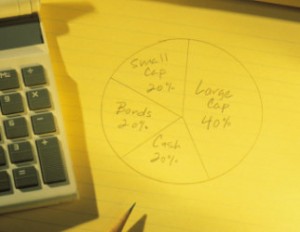


Long-time readers will know that I’ve written before about Dimensional Fund Advisors, an innovative investment firm that builds low-cost, widely diversified funds. I enjoy keeping an eye on DFA, because their strategies are based on academic research (there are a few Nobel laureates in the family) that all investors can learn from.
The one downside of Dimensional funds is that they’re not available through discount brokerages: the only way you can get them is through a small number advisors who have been schooled in DFA’s strategies. This helps the company control fund inflows and outflows from performance-chasing retail investors that would make executing those strategies impossible.
But that doesn’t mean Couch Potatoes can’t pop the hood on these funds and take a look. Just shy of a year ago, the firm launched the DFA Global Balanced Fund in Canada: it’s a fund of funds that includes the standard 60% equity and 40% bonds. I thought it would be interesting to compare it to my own Complete Couch Potato.
How DFA works
Before we do that, however, it’s worth taking some time to understand how DFA funds are built. They’re not index funds, and it’s not even accurate to say they’re passively managed, though there is certainly to stock selection, timing, or forecasting involved. The methodology is complicated, but in the broadest terms, it starts with the whole universe of stocks in a particular market and then gives added weight to smaller companies and those with value characteristics (specifically high book-to-market ratios). This strategy is based on the Fama-French Three Factor Model, which holds that small-cap and value stocks should deliver higher risk-adjusted returns over the very long term.
DFA uses this methodology even in their “Core Equity” funds, but the tilt to small-cap and value stocks is even stronger in their “Vector Equity” funds. All of the funds are hugely diversified: the Canadian Core Equity Fund holds more than 600 stocks, for example, while their International Core Equity Fund holds over 4,300. All of the funds have extremely low turnover, since they’re not tied to any third-party index that adds or delete stocks.
Dimensional’s bond strategies get less attention, but again the funds are engineered to get broad exposure to specific risk factors—in this case, maturity and credit quality—with no attempt to forecast interest rates. In general, the funds keep maturities between one and five years, and they stick to the highest-quality bonds—no high-yield junk. Perhaps DFA’s most unusual fixed-income strategy is global diversification, something very few Canadian bonds funds share. (All of the currency exposure in the bond funds is hedged to the Canadian dollar, which is what investors should want.)
Let’s get naked
With that of the way, here’s what the DFA Global Balanced Fund looks like with its shirt off:
| DFA Canadian Core Equity |
14% |
| DFA Canadian Vector Equity |
6% |
| DFA US Core Equity |
7% |
| DFA US Core Equity (Hedged) |
7% |
| DFA US Vector Equity |
5% |
| DFA International Core Equity |
7% |
| DFA International Core Equity (Hedged) |
7% |
| DFA International Vector Equity |
5% |
| DFA Global Real Estate Securities |
2% |
| DFA Five-Year Global Fixed Income |
30% |
| DFA Investment Grade Fixed Income |
10% |
|
|
You’ll notice that the equity mix is about evenly split between Canadian, U.S. and international, just like the Compete Couch Potato. The international equity component (like the Vanguard Total International Stock ETF) also includes emerging markets. The total number of stocks in the DFA fund is close to 8,000, while the Complete Couch Potato has more than 10,000.
The main difference, of course, is that about one-third of the DFA equity portfolio gets the small/value tilt from the Vector funds. Another is that about a third of the foreign currency exposure is hedged. Partial hedging is also a technique used by many pension funds: it’s a sensible strategy for Canadians, but it’s expensive and a bit difficult to do with ETFs. I’ve left the Complete Couch Potato unhedged for that reason.
The two fixed income funds, as I’ve said, includes U.S. and international bonds as well as Canadian issues, and are confined to relatively short maturities. That makes them quite different from my Complete Couch Potato, which is all Canadian and has a longer duration. Also unlike my model portfolio, the DFA fund has no exposure to real-return (inflation-protected) bonds.
The final ingredient is the real estate allocation, which is also globally diversified, with just a tiny amount to Canadian REITs. (The DFA fund’s top holdings are similar to the iShares Global Real Estate Index Fund). I’m not sure I understand the logic of allocating just 2% to this asset class: such a small holding will have a negligible effect on the portfolio. For what it’s worth, the Complete Couch Potato includes 10% in real estate, all Canadian.
It’s a shame that DIY investors can’t get access to this fund, because it’s a one-stop solution that is probably superior to what 95% Canadians hold in their portfolios. It’s also extremely cheap: the F-series MER is just 0.60%, though the advisor would add his or her own fee on top of that.
My own Über-Tuber portfolio was an attempt to mimic DFA strategies with ETFs, and it actually comes in a little cheaper. It’s a reasonable proxy for a DFA portfolio, but unless you have a rather large account (I recommend at least $200,000) and a lot of experience, I still recommend the Complete Couch Potato to keep things simpler.













Great article – is Xbal just as good as dfa?